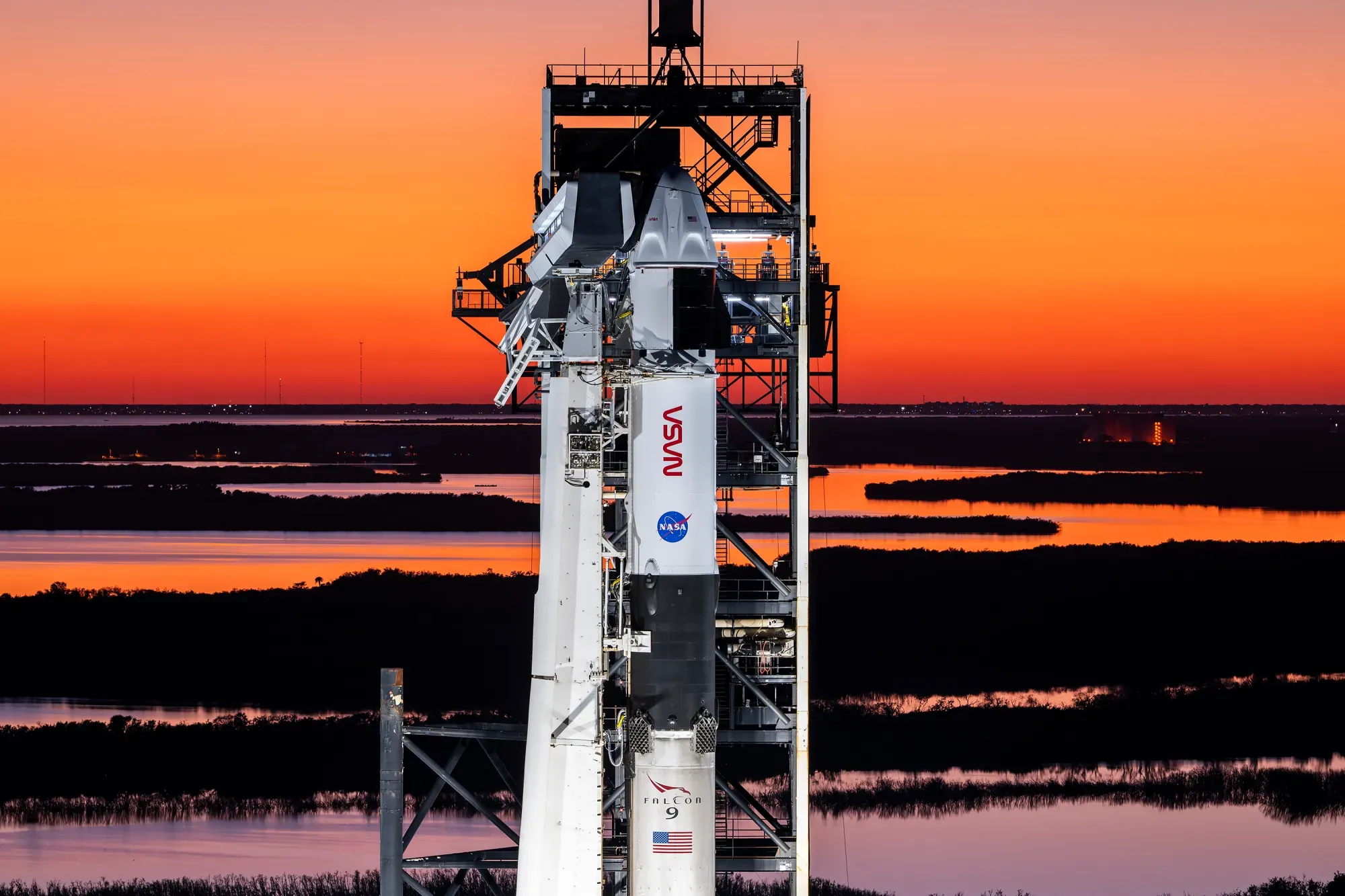
Crew-10 Mission Launches, Paving Way for Starliner Astronauts’ Return
After a series of delays and an unexpected extension to their mission, the saga of NASA astronauts Butch Wilmore and Suni Williams is nearing its conclusion with the successful launch of SpaceX’s Crew-10 mission on Friday night. The mission carries a fresh crew to the International Space Station (ISS), ultimately enabling Wilmore and Williams to return to Earth after a prolonged stay initiated by the problematic Boeing Starliner spacecraft.
Crew-10, commanded by NASA astronaut Anne McClain and piloted by Nichole Ayers, also includes Japanese astronaut Takuya Onishi from the Japan Aerospace Exploration Agency (Jaxa) and Roscosmos cosmonaut Kirill Peskov. The crew lifted off from NASA’s Kennedy Space Center in Cape Canaveral, Florida, at 7:04 p.m. EST, propelled by SpaceX’s Falcon 9 rocket, a workhorse in the world of space launches.
The Falcon 9 rocket performed flawlessly, carrying the SpaceX Dragon capsule into orbit. The Dragon capsule then separated from the rocket, embarking on its journey to the ISS. The launch, however, was not without its hurdles. An initial launch attempt on Wednesday was scrubbed due to an issue with the launchpad’s ground system. SpaceX ground teams meticulously investigated a hydraulics system responsible for controlling the clamp arms that secure the Falcon 9 rocket. After identifying a potential pocket of trapped air, the system was flushed, and the issue was resolved.
"I am extremely proud of our NASA and SpaceX ground engineers and joint operations teams in quickly identifying and resolving this issue," said Steve Stich, manager of NASA’s Commercial Crew Program, highlighting the collaborative effort required to ensure mission safety.
Prior to the Wednesday delay, the Crew-10 mission had already experienced two postponements from its originally anticipated launch in February. NASA initially announced a shift to late March to provide SpaceX with ample time to prepare a new Dragon capsule. This timeline was later adjusted to mid-March, reportedly influenced by pressure from then-President Donald Trump and SpaceX CEO Elon Musk. Ultimately, NASA opted to utilize a previously flown Dragon capsule named Endurance, demonstrating the reusability that has become a hallmark of SpaceX’s approach.
As the name implies, Crew-10 is SpaceX’s tenth science rotation mission to the ISS. These missions, typically lasting around six months, are conducted under NASA’s Commercial Crew Program. This program allows NASA to contract with private companies like SpaceX to transport astronauts and cargo to the ISS, freeing the agency to focus on more ambitious projects, such as the Artemis lunar program and future crewed expeditions to Mars.
The Boeing Starliner is intended to become a second operational vehicle for NASA within the Commercial Crew Program. However, its path to certification has been fraught with challenges, particularly after its inaugural crewed flight test encountered significant setbacks. Wilmore and Williams were launched on the Starliner in June, only to face a series of issues that ultimately prevented the spacecraft from returning them to Earth as planned. In September, an unmanned Starliner vehicle successfully undocked from the space station and executed a parachute-assisted landing in New Mexico, but the crew remained on the ISS.
Instead of returning on Starliner, Wilmore and Williams were integrated into Expedition 72 and subsequently folded into the Crew-9 mission, which arrived at the space station in September with only two astronauts instead of the usual four. The plan since August was for Wilmore and Williams to return to Earth aboard a SpaceX Dragon capsule alongside the Crew-9 astronauts after they completed their own months-long mission.
With the launch of Crew-10, that plan is now on the verge of becoming reality. The arrival of the four new astronauts will pave the way for Crew-9 to depart the station, carrying Wilmore and Williams back to Earth. Their extended stay has lasted over 280 days, far exceeding the duration of a standard mission.
The Crew-10 astronauts are expected to reach the ISS on Saturday night, docking at the Harmony module, a port and passageway onto the ISS, around 11:30 p.m. EST. Following docking, the hatch will be opened, allowing the new arrivals to greet the Expedition 72 crew, including Wilmore and Williams.
The voyage to the ISS is taking longer than initially planned. Had the launch occurred on Wednesday as scheduled, the Crew-10 astronauts would have arrived at the space station early Thursday morning. However, due to the Friday night launch, the orbital laboratory is now situated further away from the Dragon capsule’s entry point into Earth’s orbit, as explained by a NASA spokesman.
NASA is providing live coverage of the docking and hatch opening on its streaming service, NASA+, mirroring the live coverage provided for the launch.
The successful launch of Crew-10 marks a crucial step in resolving the Starliner situation and underscores the importance of the Commercial Crew Program in ensuring continued access to the ISS. It also highlights the resilience and adaptability of the astronauts involved, particularly Wilmore and Williams, who have faced unexpected challenges with grace and professionalism. Their return to Earth will mark the end of a long and eventful chapter in the story of space exploration.
The mission is a testament to the collaboration between NASA and SpaceX, showcasing the capabilities of private space companies in supporting human spaceflight. The advancements in technology and operational procedures are paving the way for a future where space travel is more frequent and accessible, enabling continued scientific research and exploration in orbit and beyond.
